關於台灣 A B O U T T A I W A N
|
|
|
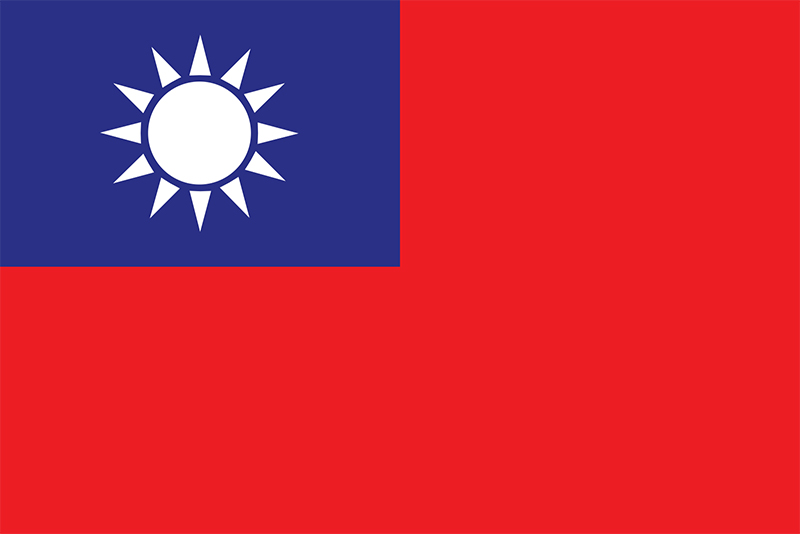 Destination Taiwan, a Nations Online Project country profile of the island nation off the coast of mainland China in East Asia.
Destination Taiwan, a Nations Online Project country profile of the island nation off the coast of mainland China in East Asia.
Taiwan, officially the Republic of China (ROC), was formerly known as Formosa. The largely mountainous island is located between the Strait of Taiwan, the South China Sea and the Philippine Sea, about 370 km (230 mi) north of the Philippines' main island Luzon and approximately 180 km off the southeastern coast of China. The island shares maritime borders with the People's Republic of China, Japan, and the Philippines.
With an area of 36,188 km², Taiwan is slightly larger than Belgium or somewhat smaller than the U.S. states of Maryland and Delaware combined.
Taiwan has a population of 23.4 million (2021), making it one of the most densely populated large countries in the world (behind Bangladesh). The capital is Taipei; the largest city is New Taipei City or Xinbei, an urban agglomeration with 4 million people to the southwest of the capital.
WHAT IS TAIWAN FAMOUS FOR?
In Taiwan, Chinese culture and tradition have been much more preserved, while in mainland China the purge by the "Great Proletarian Cultural Revolution" brought economic activity to a halt, wiped out folk religion and traditions, destroyed historical and cultural assets, and killed two million people.
What is Taiwan known for? A list of things the island nation is famous for:
-
Taipei 101, with a height of 508.2 meters, Taipei 101, the 101-story supertall skyscraper in the capital, was the tallest building in the world for five years, from 2004 to 2009.
-
The National Palace Museum in Taipei is famous for its huge collection of ancient Chinese imperial artifacts and artworks.
-
The topography of the island features high, steep mountains that rise abruptly from the low-lying coastal plains.
-
Sun Moon Lake, the lake in Nantou County, is Taiwan's largest body of water and is designated as one of the country's thirteen national scenic areas.
-
The Lungshan Temple is a resilient eighteenth-century Chinese popular religion temple. Taipei's oldest temple was destroyed completely or partially in numerous earthquakes or fires, but the people of Taipei have always rebuilt it
-
Shilin Night Market, probably Taiwan's most famous night market.
-
The Alishan Forest Railway is a network of narrow-gauge railroads that winds for 86 km through the mountains of the Alishan National Scenic Area. The Alishan Sacred Tree (Shenmu) is a national monument. The over 3,000 years old giant red cypress was located at the Sacred Tree Railway Station at an elevation of around 2000 m.
-
Taiwan International Balloon Festival is a hot-air balloon festival held at the Luye Highland in Taitung County.
-
The Taiwanese love their mascots; every self-respecting institute or company has its mascot.
-
The Dome of Light, the world's largest public art installation made of individual pieces of colored glass, is located in the Formosa Boulevard metro station in Kaohsiung
-
Pier-2 Art Center is an art center in the Yancheng District of Kaohsiung City.
-
Twin-Heart Fish Trap, a well-preserved ancient fish trap on Penghu island.
-
The High-Heel Wedding Church is a high-heel shoe-shaped structure in Budai Township.
-
Hot pot, instant noodles, pineapple cakes, beef noodle soup, soup dumplings, stinky tofu and oyster omelets are only some highlights of the mainly seafood-based Taiwanese cuisine.
-
Taiwan's High-mountain tea is famous for its complex flavors and aromas. Gaoshan teas are varieties of semi-oxidized Oolong tea grown at altitudes higher than 1,000 meters in the mountains of central Taiwan.
-
Cat cafés, Instant noodles and Bubble tea (boba - tea with shiny tapioca balls) are Taiwanese inventions. Also invented by people with Taiwanese roots were the N95 masks and the USB flash drive.
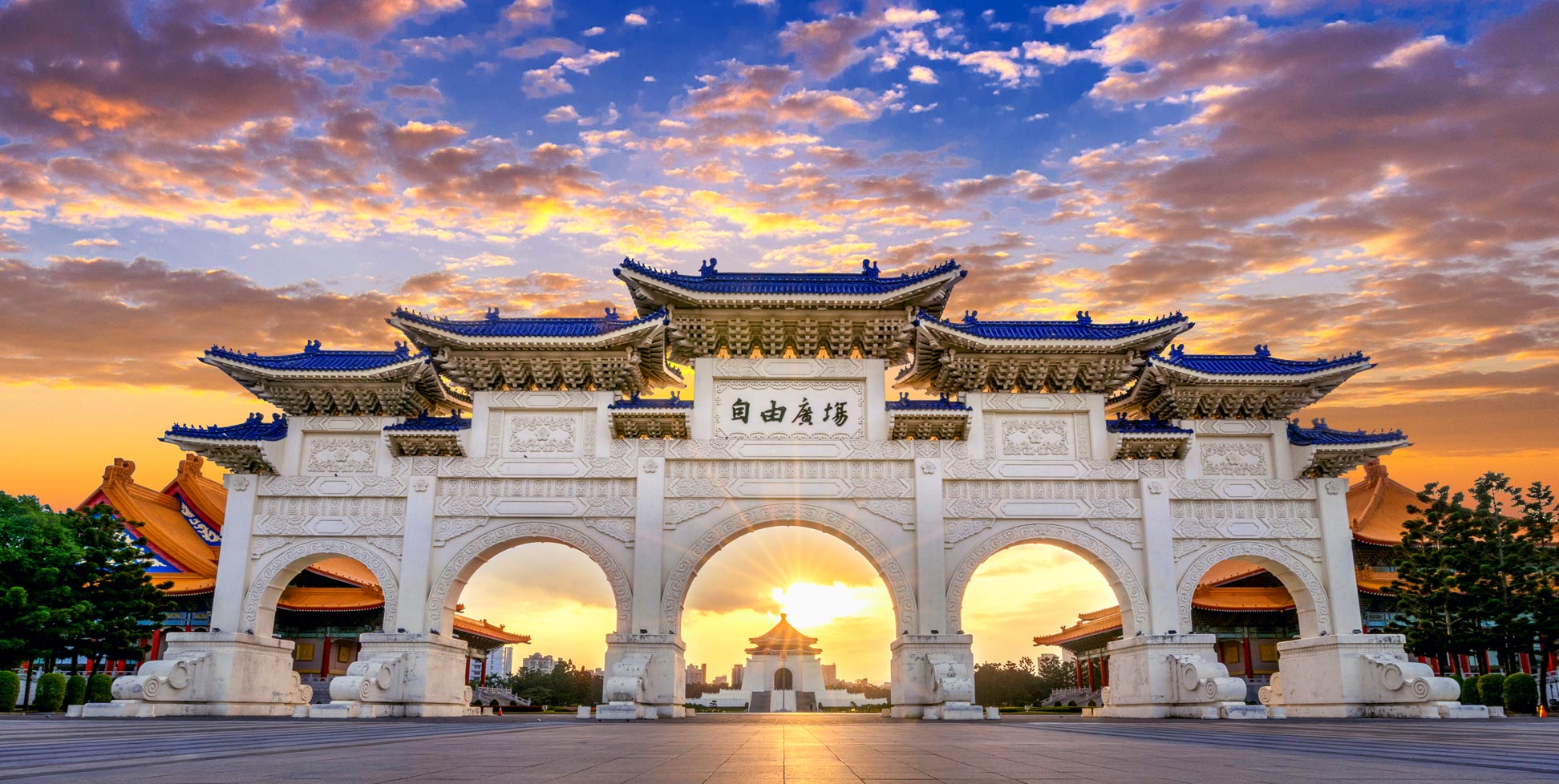
The main entrance gate to the National Chiang Kai-shek Memorial Hall in Zhongzheng District of Taipei, Taiwan's capital. Chiang Kai-shek (Jiang Jie Shi) was a Chinese statesman and general and President of China from 1928–31 and 1943–49. He also was President of the Republic of China (Taiwan) from 1950–75. Chiang Kai-shek sought to unify China by military means in the 1930s but was defeated by the Communists. He was forced to leave mainland China in 1949 and establish a nationalist Chinese state in
Taiwan's Presidential Office Building in Taipei at night. The Baroque-style building was completed in 1919 during Japanese rule. Today the building houses the Office of the President of Taiwan.
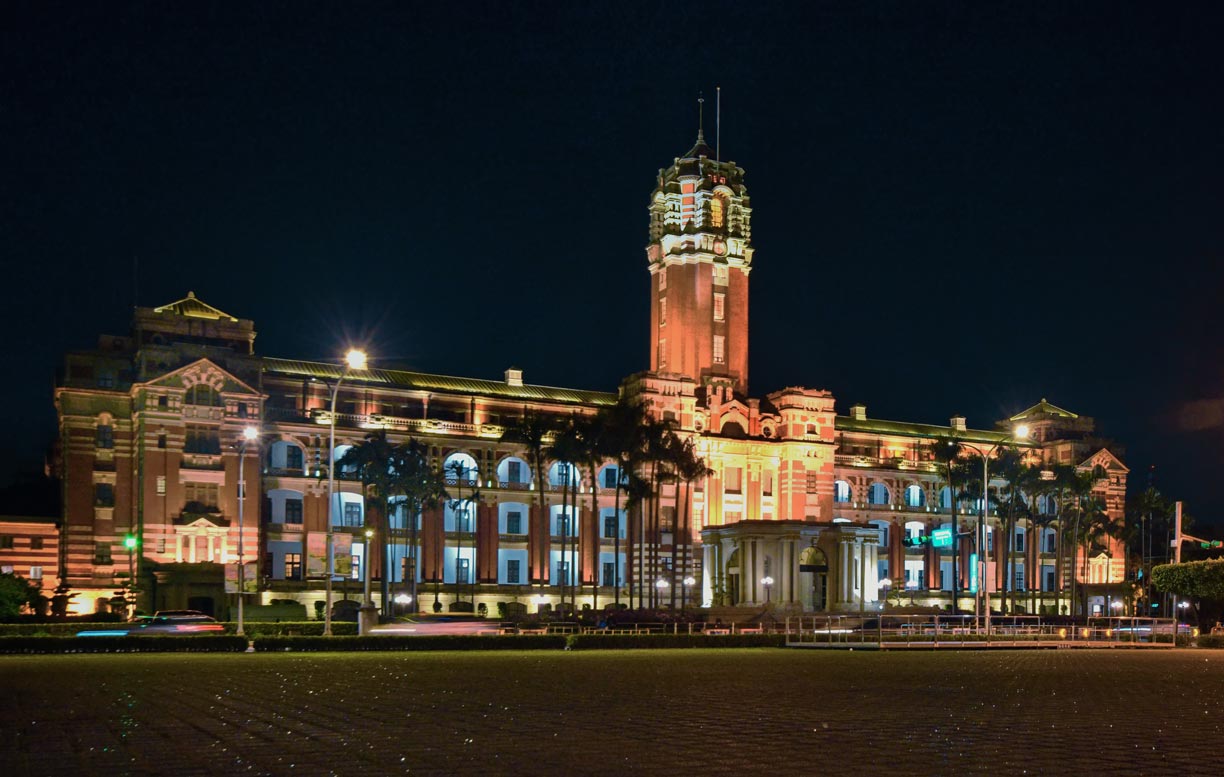
MAP OF TAIWAN
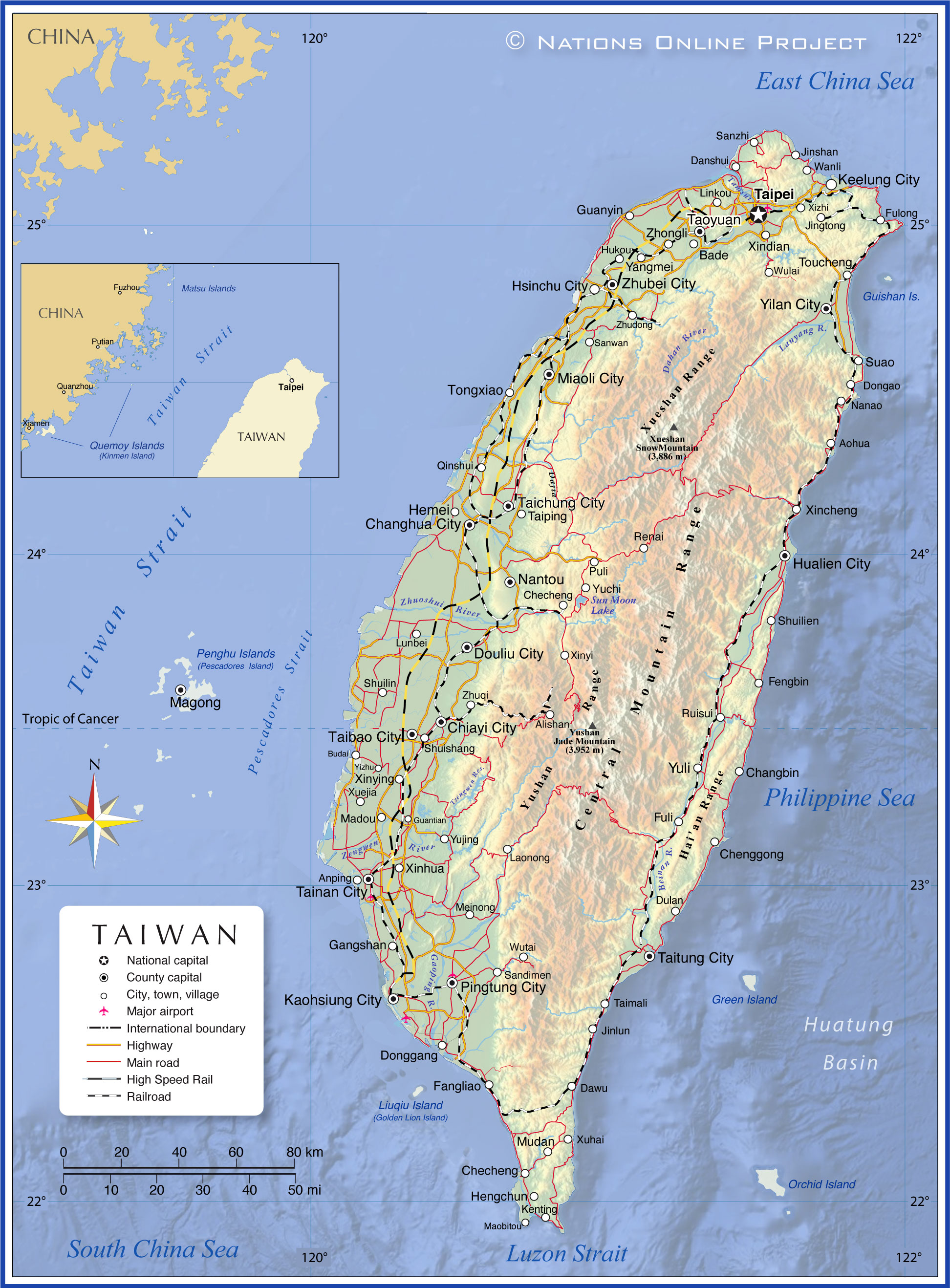
NEWS FROM TAIWAN

The media environment in Taiwan is quite free and also quite competitive. However, according to media freedom organizations, Beijing is putting pressure on Taiwan's media owners, who often have business interests on the mainland.
According to RSF, political interference is rare and less tolerated. However, Taiwan's journalists suffer from a very polarized media environment dominated by sensationalism and the profit motive - a quite capitalistic approach.
-
Central News Agency (CNA)
Taiwan's national news agency.
-
China Post
English-language online news. The China Post was a daily English-language newspaper; it ceased its print publication in 2017.
-
Taiwan News
English-language online news. Taiwan News ceased its print publication in 2010.
-
The Taipei Times
The Taipei Times is now the only printed daily English-language newspaper in Taiwan.
ARTS & CULTURE OF TAIWAN
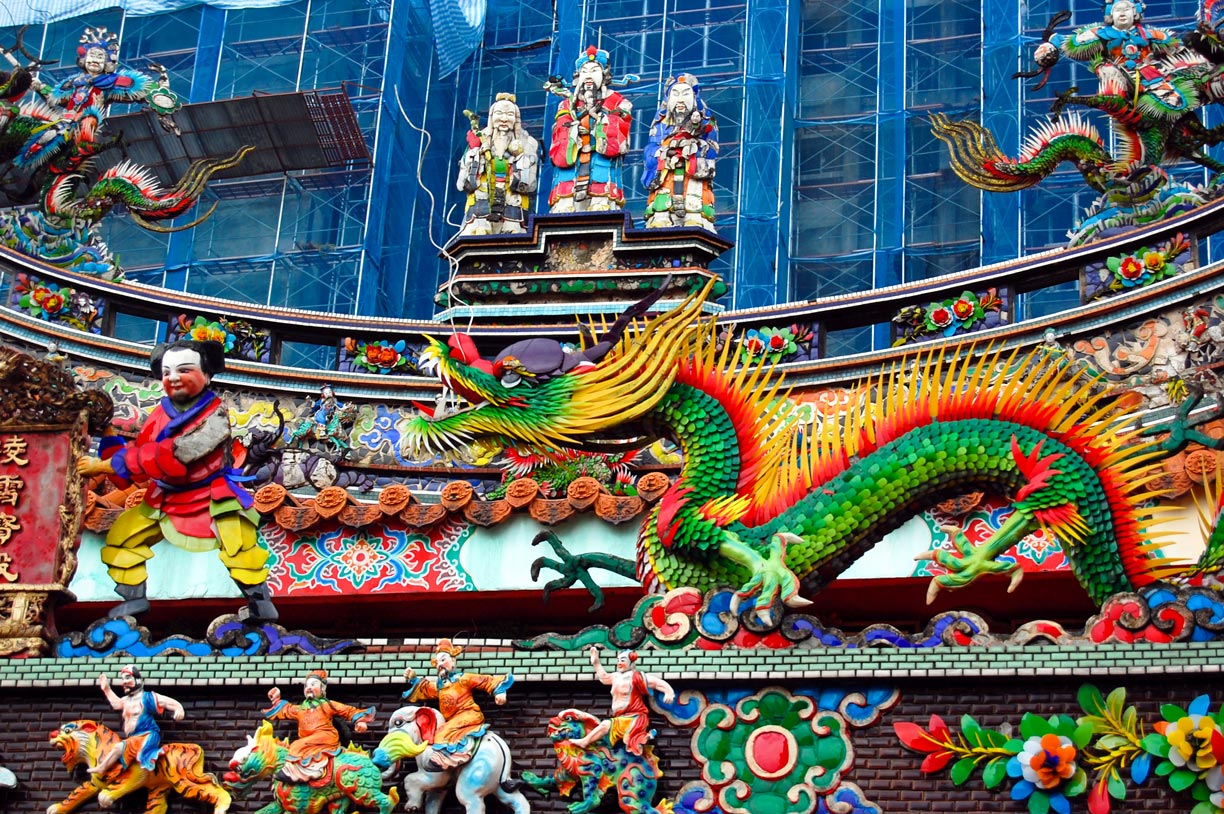
Close up of the roof of a temple in Taipei with the Sanxing deities Fu, Lu, and Shou (top), a Chinese dragon (always on the hunt for the Pearl of Wisdom). The legendary creatures in Chinese mythology represent wisdom, power, luck and creativity.
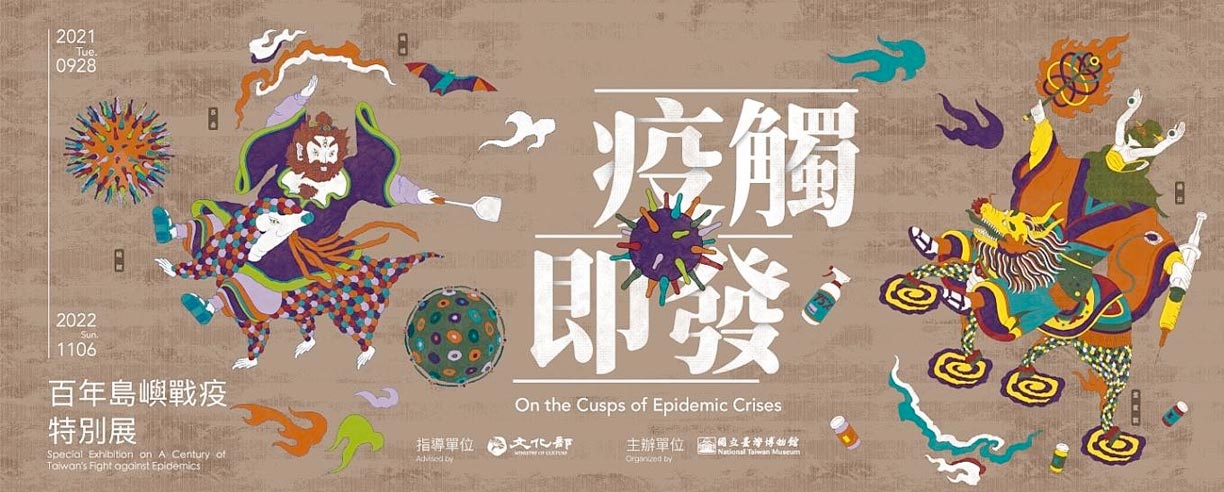
TAIWAN HISTORY
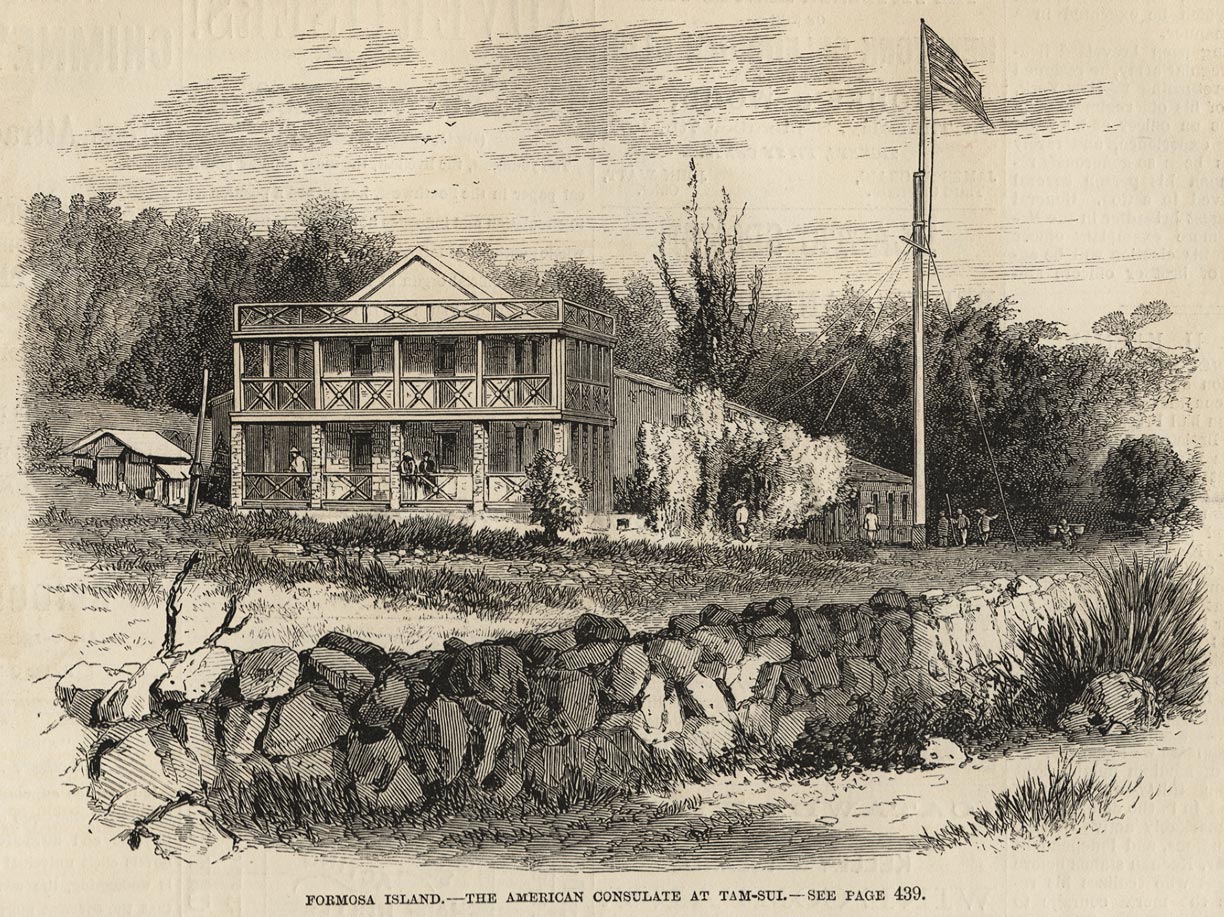
Economy of Taiwan.
Taiwan's industry consists primarily of many small and medium-sized enterprises (SMEs), but skilled crafts and trades also play an important role. Its dynamic economy is heavily dependent on exports, especially electronics, machinery and refined petroleum. The Taiwanese semiconductor industry is the unmatched global leader. Taiwan Semiconductor Manufacturing Company (TSMC) alone supplies more than 50% of the worldwide market. The island has a highly skilled workforce and is an important link in global supply chains, a central hub for shipments and transshipments in East Asia, and a major center for advanced research and development (R&D).
Source: Taiwan Plus Website
|